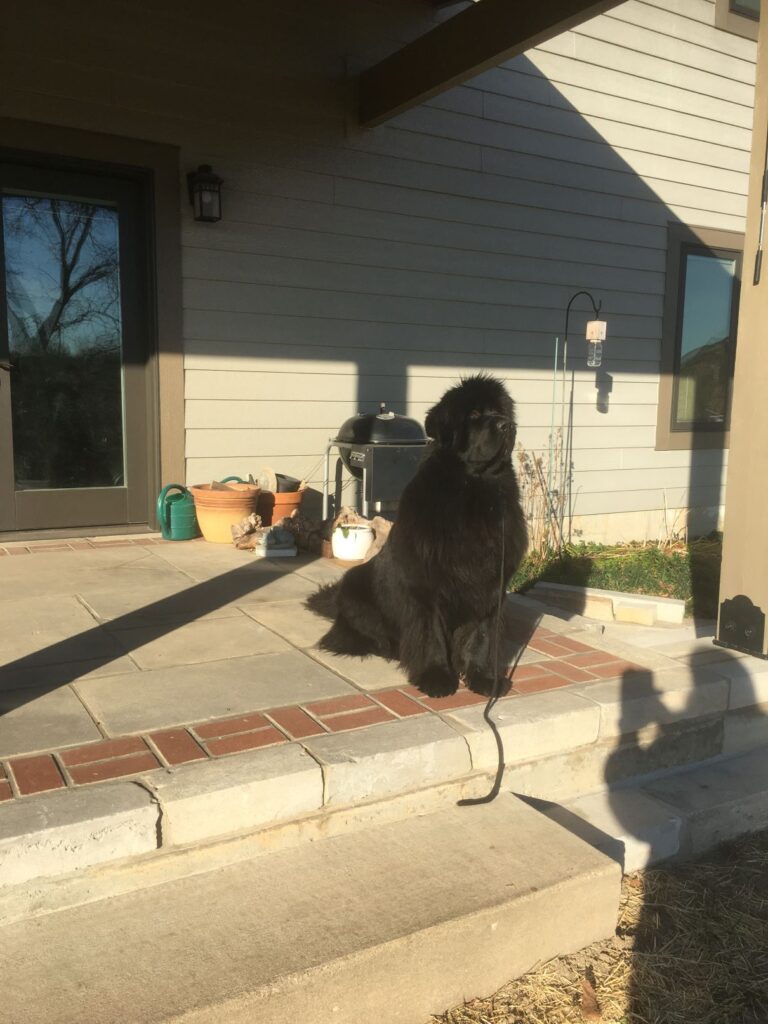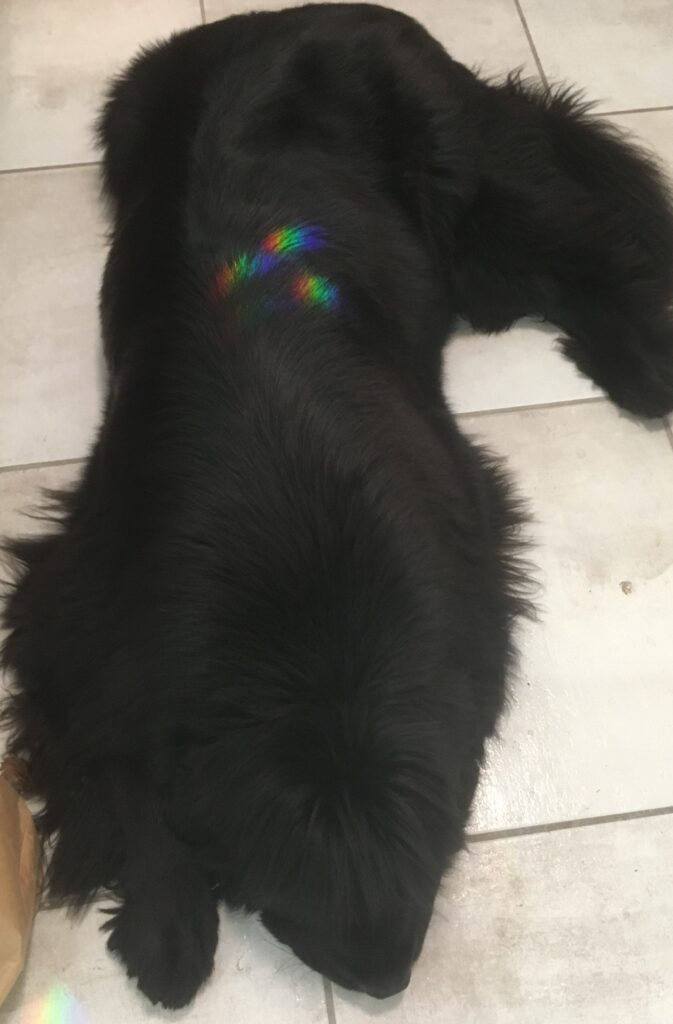If it is necessary to take your dog in your vehicle during warm weather times of the year, there is some preparation that can help keep your dog from overheating, as well as emergency supplies to have on-hand should a vehicle become stalled or stopped or should you encounter significant delay due to an accident or road construction. Heat is a major concern when your dog is in the car. Dogs have a limited ability to cool themselves, by panting or by sweating through their pads, so it is easy to overstress them, especially long-coated or dual-coated breeds, or large, heavy breeds.
When the temperature is warm outside, sunlight coming through glass will cause the inside of a vehicle to be much warmer. “Solar glass” is better for a windshield, to reduce some of the heat build-up inside. Should you need to replace a windshield, be sure to ask for this. Window films are also available that decrease the amount of light coming through the glass. (This is different from simply darkening the tint; inform an installer about its purpose.)
Check your air conditioner’s performance. Most vehicle air conditioners are capable of cooling the incoming air stream by 25 F. If you put a cooking thermometer in the vent by the driver’s seat, does this show a drop of 25 F? If not, your air conditioner may need to be serviced. Remember that a drop of 25 F may not be sufficient during intense heat.
Rear seats and cargo areas may not have air conditioning vents, and heat that comes up through the floor of the vehicle in a cargo area can overheat a dog while you are comfortable in the front seats. Dogs who tend to not complain may give little or no indication of distress before it is too late. Large dogs with more body mass will have more difficulty cooling down from a warm temperature that may not seem too warm to a human in shorts and sandals. Here are some additional tips to control heat in a vehicle for a dog:
1) Set the thermostat cool enough that you will need to wear a sweatshirt and add a fan that moves cool air from the front seat to where the dog is. Fans with rechargeable batteries are good. These will run should the car become inoperable, to provide some support until help arrives. Also keep a reflective solar “blanket” in the travel supplies for emergency shelter. Air flow, shade and a mister bottle filled with water can buy some time.
2) Be sure that your dog is not surrounded or enclosed by luggage or bags that encroach upon its ventilation space, an area around the outside of the crate. Be sure that there is more than adequate air flow around the crate and that the dog is not directly beside a window.
3) Create an air gap under where the dog will ride. For example, in an SUV or mini-van, heat will come up through the floor. Build a deck to elevate the dog off the floor. This can be done with 2 x 2’s or 2 x 4’s and plywood. This will reduce the amount of heat that can be transferred. Rugs alone do little to reduce heat transfer and can make the heat from the floorboard inescapable. Pads between the crate and the deck will help with road vibration and may reduce heat transfer a little.
4) Reflective low-e insulation can be used to cover side windows or the rear window of an SUV, provided that doesn’t cause visual impairment for the driver. Cover the interior of the windshield with a reflective sun-shade when you stop for breaks.
5) Make a temporary add-on “air conditioner” using a foam cooler with a block of ice and a fan. Cut an opening for the fan lower in the cooler so any condensate remains inside but the air moves across the ice and out the other side through another opening. Freezing two gallon-size water bottles in advance will provide longer-lasting support than bags of cubed ice, but once the first containers of ice melt, buying bagged ice will be needed.
6) Don’t leave your dog in a parked vehicle, even with the air conditioning running. If the engine stops running, and even if it doesn’t, the car will overheat quickly. Air conditioners perform better while driving than when idling.
7) Plan your travel for early or late in the day to avoid the most intense periods of heat.
8) Watch your dog frequently for its condition. Barking and other displays of anxiety, or indications that can be subtle, like listlessness or restlessness, may signal an urgent need for attention.
General:
1) Water is critical. When the air conditioner is running, it is constantly pulling moisture out of the air, and when your dog is panting, it is losing water. Be sure to take enough water for the trip and keep fresh water available in your dog’s dish, to avoid dehydration and help your dog cope with the trip.
2) Pack enough of your dog’s food for the trip and store the food out of the sunlight.
3) Take potty breaks frequently enough for your dog. For most adults, this may be every 3 hours. Puppies or seniors, or dogs who are stressed about travel, may need more frequent breaks. Don’t give unusual treats to your dog during travel to avoid the number of stops needed should GI distress develop. Each time the dog gets out of the vehicle onto a hot concrete or paved surface, this will add to the heat burden. Breaks on a mowed, grassy area are better.
4) When you stop for breaks, keep your dog on-leash at all times. Dogs can be spooked by noises, can be the target of someone else’s dog that is not on-leash or they can spot something you don’t notice, like a stray cat, and they may chase in excitement before you can react. Travel can be exciting for dogs too, so the couch potato at home may be more energized than usual. Use a leash that your dog can’t break, and don’t let it go so far to the end of a leash that you could lose control.
5) Always pick up after your dog, and keep bags with you when you walk your dog. This is a courtesy to other dog owners, so they or their dogs don’t step in what you leave behind.
6) Keep a travel collar on your dog with identification, such as the rabies tag and vet clinic. If your dog is on medication, it is a good practice to write that down and put it in a visible place in a brightly colored envelope, along with a plastic storage bag containing the medications. A dog who is spooked or escapes during an accident may flee. Before you leave home, print a photo of your dog along with your contact information in case you need to print flyers.


